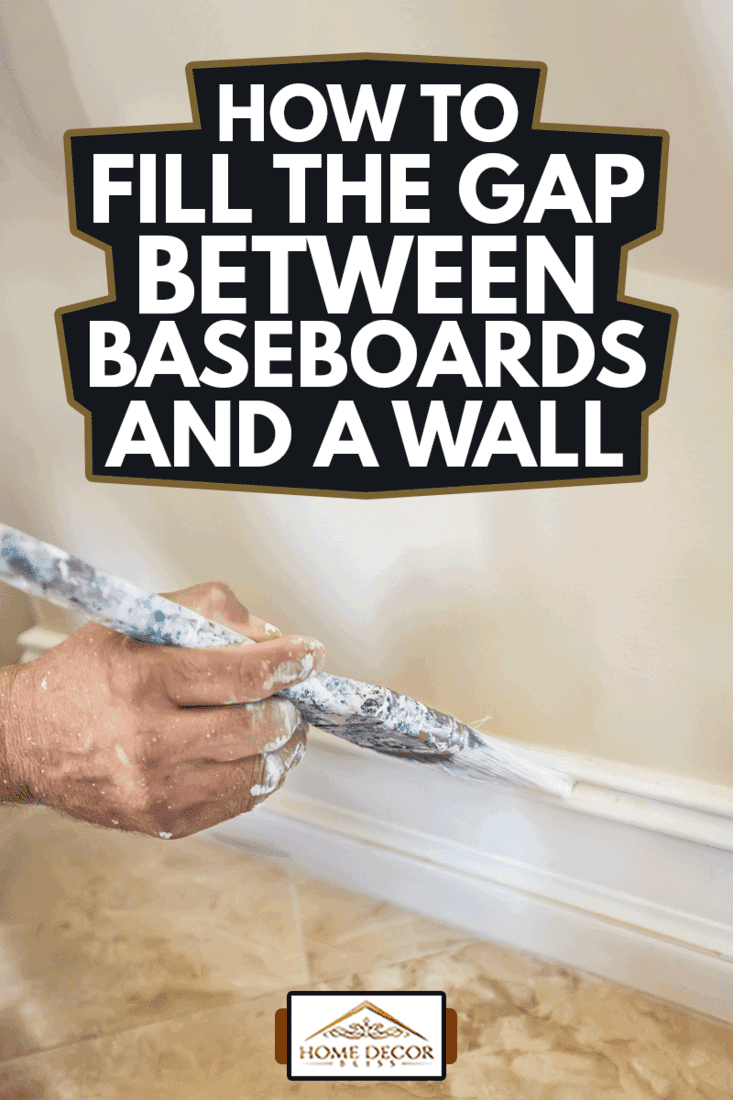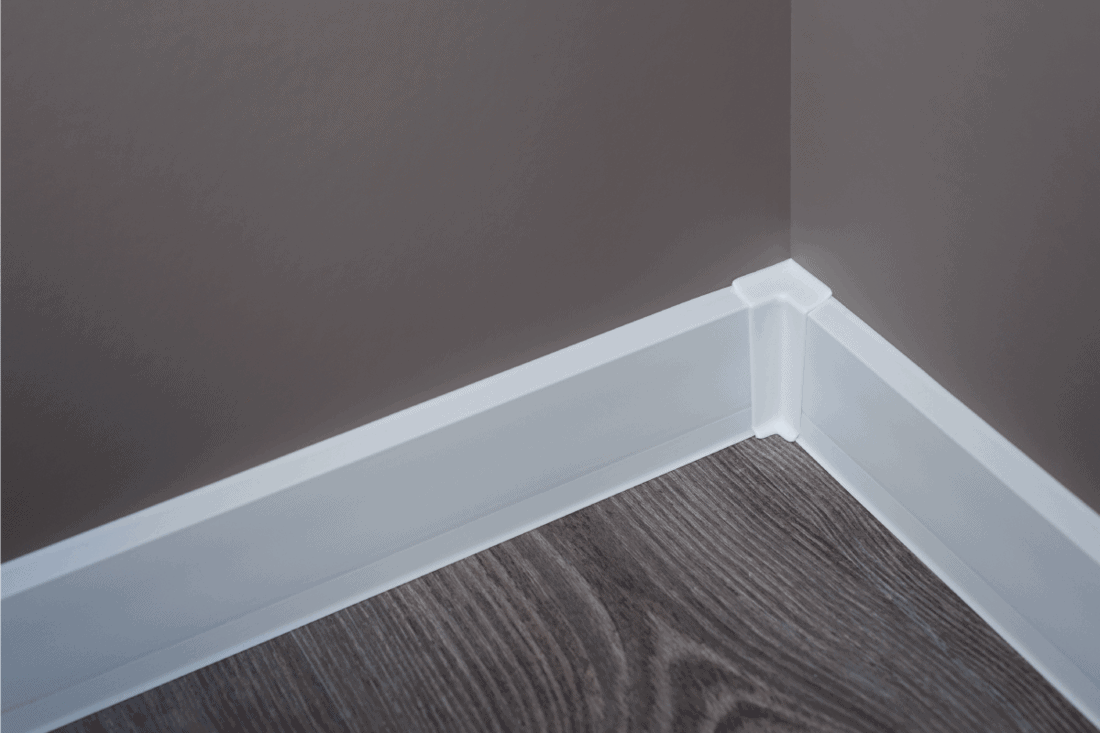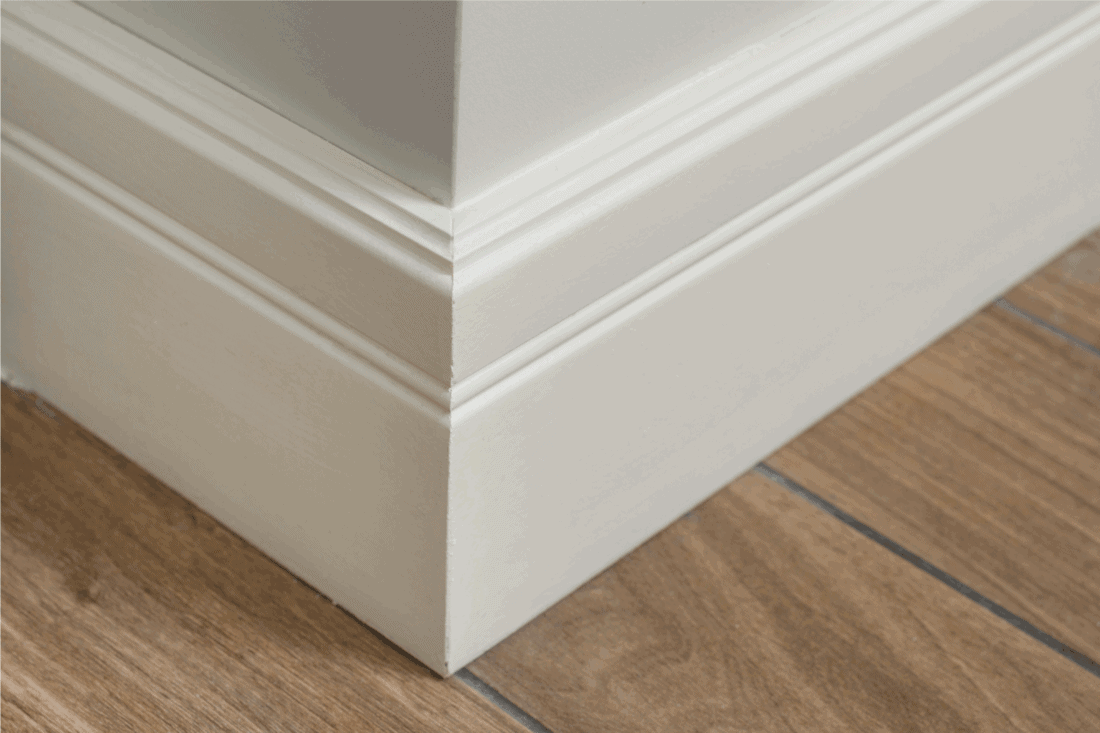Sometimes, there is a gap between baseboards and a wall. When you notice this, it may trouble you. You may now wonder how to fill the gap between the baseboard and wall in your home or workspace. Look no further. We have researched all about the ways you can successfully fill this gap.
The way you fill the gap between the baseboard and wall is by utilizing caulk. The best caulk to use for trim and baseboards is painting caulk. It is easiest to use a caulking gun when applying caulk.
Continue reading to learn more about what the gap is intended for, how to fix gaps in baseboard corners, how much space should be between hardwood flooring and the baseboard, whether or not you should caulk baseboard to the floor, and more.

Why is there a gap between the baseboard and the wall?
There are a few reasons why there is a gap between the baseboard and the wall. In most cases, there is a gap between the baseboard and the wall because of wall imperfection or faulty installation.
Use Caulk to Fix the Gap

We may include affiliate links and curated AI content to highlight top design styles.
When the gap is 1/4-inch or smaller, you can fill the space with caulk. In order to do the best job, you must have a caulk gun that works properly. One pro-tip is to cut the tip of the tube at an angle because it will aid in the distribution process.
As the caulk dries, the water in it evaporates, which causes it to shrink. It is a good idea to initially fill the gap with foam prior to adding caulk. Take your time to fill the space out evenly so caulk does not overflow in any certain area.
Adding caulk is time-consuming, but it will help the baseboards to stay flush with the wall. Whenever you choose caulk for a project like this, you need to make sure it is painting caulk. By painting caulk, we mean caulk that is labeled or marked that it can be painted.
Click here to see this Painter's caulk on Amazon.
Use Shoe Molding for Larger Gaps Or Finishing Touches
If the space is any wider than 1.4-inch, you will likely need shoe molding.
Click here to see shoe molding on Amazon.
This video details how to design and install shoe molding:
Baseboard pulling away from the wall
There are a few explanations as to why the baseboards in your home are pulling away from the wall. One reason this happens is faulty installation. It is important to hire professionals when building or renovating a home so that you can do things the right way on the first attempt.
House Shifting
Baseboards can pull away from walls due to a house shifting. A house will shift over time, especially if it is built on soft ground. You can not unshift a house, but you can definitely replace the baseboards to keep your home looking well put together and taken care of.
Warped Baseboards
Baseboards become warped over time, sometimes due to moisture. It also depends on the baseboard material and whether it will flex slightly or warp.
You can replace your warped baseboards with new ones to solve this problem. The space between the new baseboard and the wall will need to be filled with caulk, though.
Shrunken, Aged Caulk
Another factor that contributes to baseboards pulling away from walls is that caulk shrinks over time. People make the mistake of using little to no caulk when filling the gap with caulk. A caulking gun is the best tool for this job, and you need to use a generous amount in order to fully fill in the gap.
Click here to see this caulking gun on Amazon.
Missing Nails
During the installation process, baseboards should be attached to every stud by two nails. Attaching the baseboards this way ensures that the baseboard will be flush against the wall.
In cases where a baseboard is only attached to a stud by one screw, it will work for a while but not nearly as long as when two nails are used. Over time, the baseboard will begin to pull away from the wall, which means you have to go back and fix a problem that you could have easily prevented.
You can replace the missing nails, which will put the baseboard up against the wall; then, fill in whatever remaining gap with caulk. You can guarantee a more secure hold if you use nails that are one and a half inches long. This will ensure that the nails are driven into a stud.
When you use a nail gun, this process takes less time. Countersink the nails and fill the space with wood filler for the ideal look.
Imperfect Walls
Imperfect wall surfaces become a problem because the baseboard is unable to be flush against the wall. Any imperfection in the surface of a wall will contribute to the way baseboards attach to it. Two reasons this can happen are due to a misaligned joint or buildup of joint compound and tape.
The worst-case scenario is that the foundation of your home is affecting the movement of your baseboards. If this is the predicament you find yourself in, you will first need to have the foundation of your home repaired before you can efficiently work on replacing baseboards.
How do you fix gaps in baseboard corners?
Some people who install baseboards will use wood filler for outside corners, others use a spackling compound. You can also use drywall joint compound if you so choose. The best option is probably acrylic caulk because it is more flexible, which is great for inside corners.
Make sure the baseboards are pre-primed, or you will have to prime them yourself. Fill the outside corner gaps in with your choice between wood filler, spackling compound, or drywall joint compound. Using gloves, work the compound into the gap until it is slightly overfilled, then scrape it flat with a razor knife before it is able to harden.
Allow the filler to dry for the recommended amount of time per instructions on the packaging. Next, sand the filler with 150-grit sandpaper. If the filler ends up shrinking, repeat the process.
Acrylic latex caulk should be used to fill the inside corners. This is especially true if the baseboard is molded. There is no need to sand the inside corners.
Click here to see this set on Amazon.
Should there be a gap between the baseboard and the floor?

The two main reasons this gap is there are installing carpet or tucking away flooring.
For those who intend to install carpet, the baseboards should be about an inch off the floor. The purpose of this is to give you enough space for the padding and carpeting. If you do have a gap between the baseboard and the floor, it should not exceed the width of a quarter because heavy drafts will come through otherwise.
When there is no flooring in place, the majority of contractors will request about three-eighths of an inch to half of an inch of space between the subfloor and baseboards. This is because that little bit of extra space gives them room to tuck the flooring underneath the baseboards.
If the gap is large enough you will need to first fill it with foam then with caulk so that the baseboard can be flush with the wall. When the gap is not as deep or large, you can stick to only using the caulk.
How much space should be between the hardwood floor and the baseboard?
Each nail should be spaced about 16 to 24 inches apart along the whole length of the baseboard. There should only be about 1/4-inch between the hardwood floor and the baseboard. However, for natural wood, a 1/2-inch expansion gap is re recommended. This gives the wood room to expand or contract as it acclimates.
Do you caulk the baseboard to the floor?
You can caulk the baseboard to the floor. If you decide to go this route, it is a fairly inexpensive process. Most people who are not considered experts can do this successfully. Follow the same instructions as we've provided above to call between baseboard and floor.
Many people think of using caulk for only the top of the baseboard, but it is actually best to caulk both the top and bottom. Be sure to caulk both the top edge and bottom edge of the baseboard to ensure bugs, dirt, and grime stay at bay. Watch the video below to see how it's done:
In Closing
The best way to fill the gap between a baseboard and the wall is by using caulk. If the gap is wider than 1/4-inch, you should use a foam strip to fill the gap most of the way and then caulk as the filler for the rest.
Before you go, check out the following links related to baseboards:
Does Hardwood Floor Go Under Baseboard?







